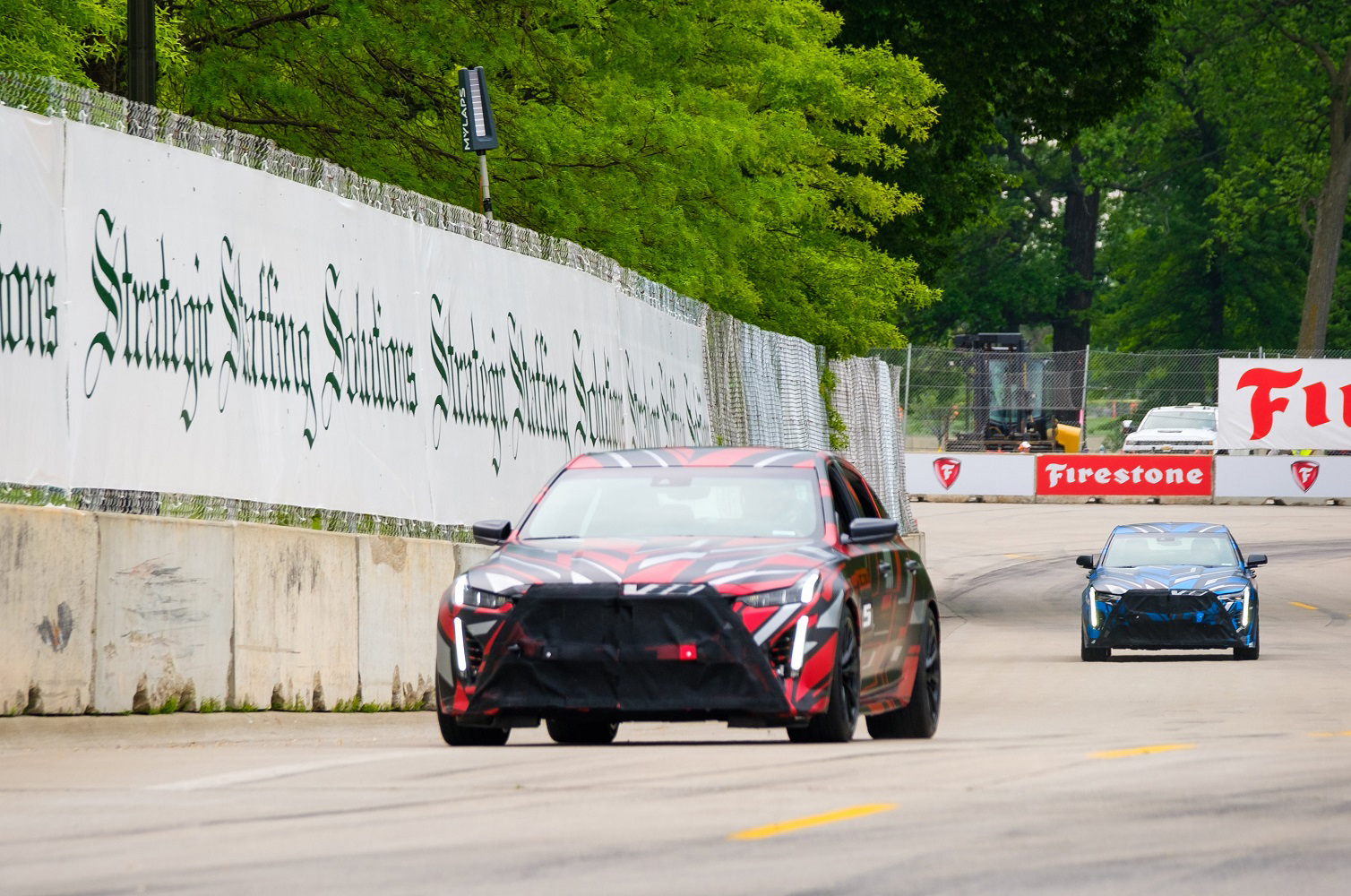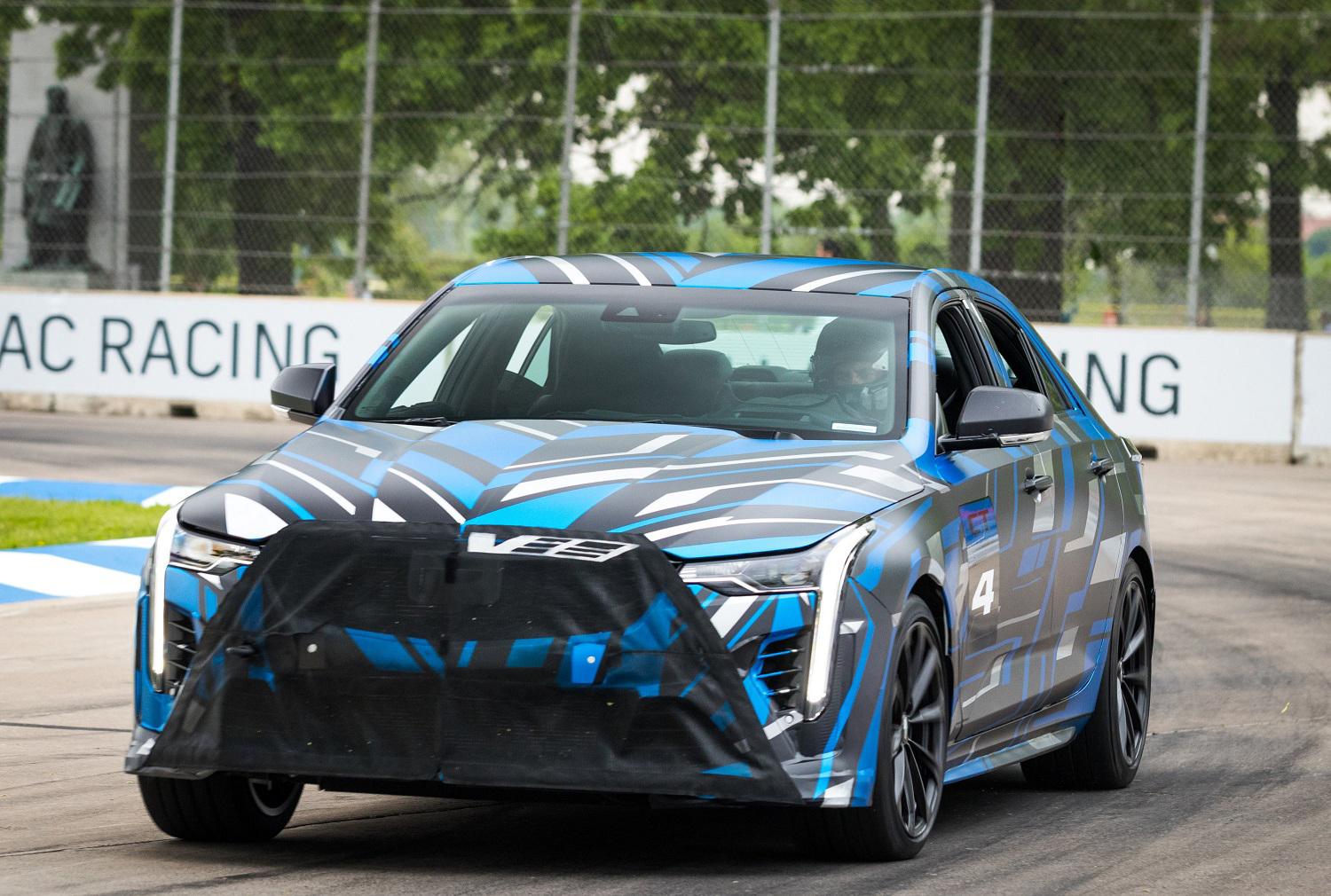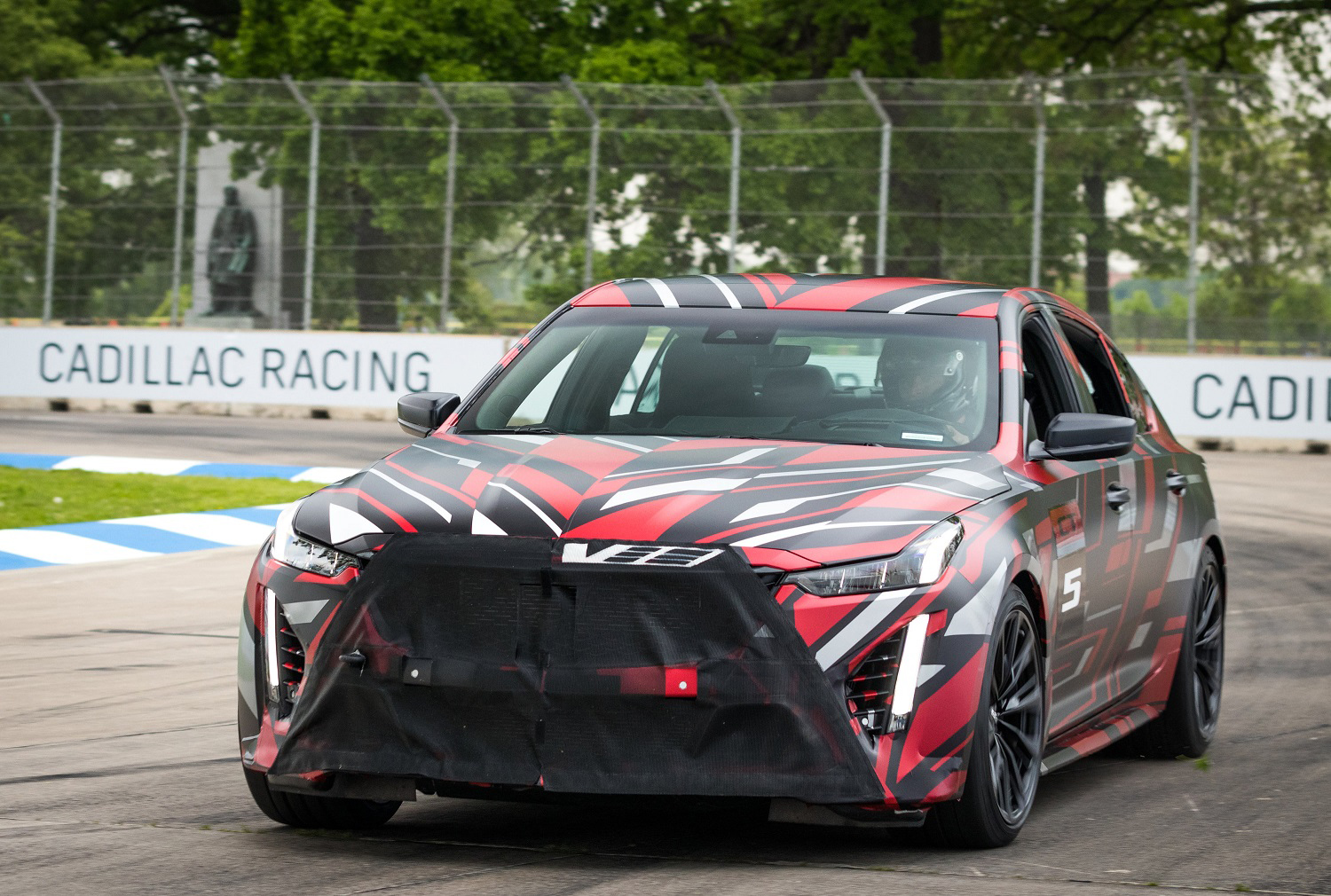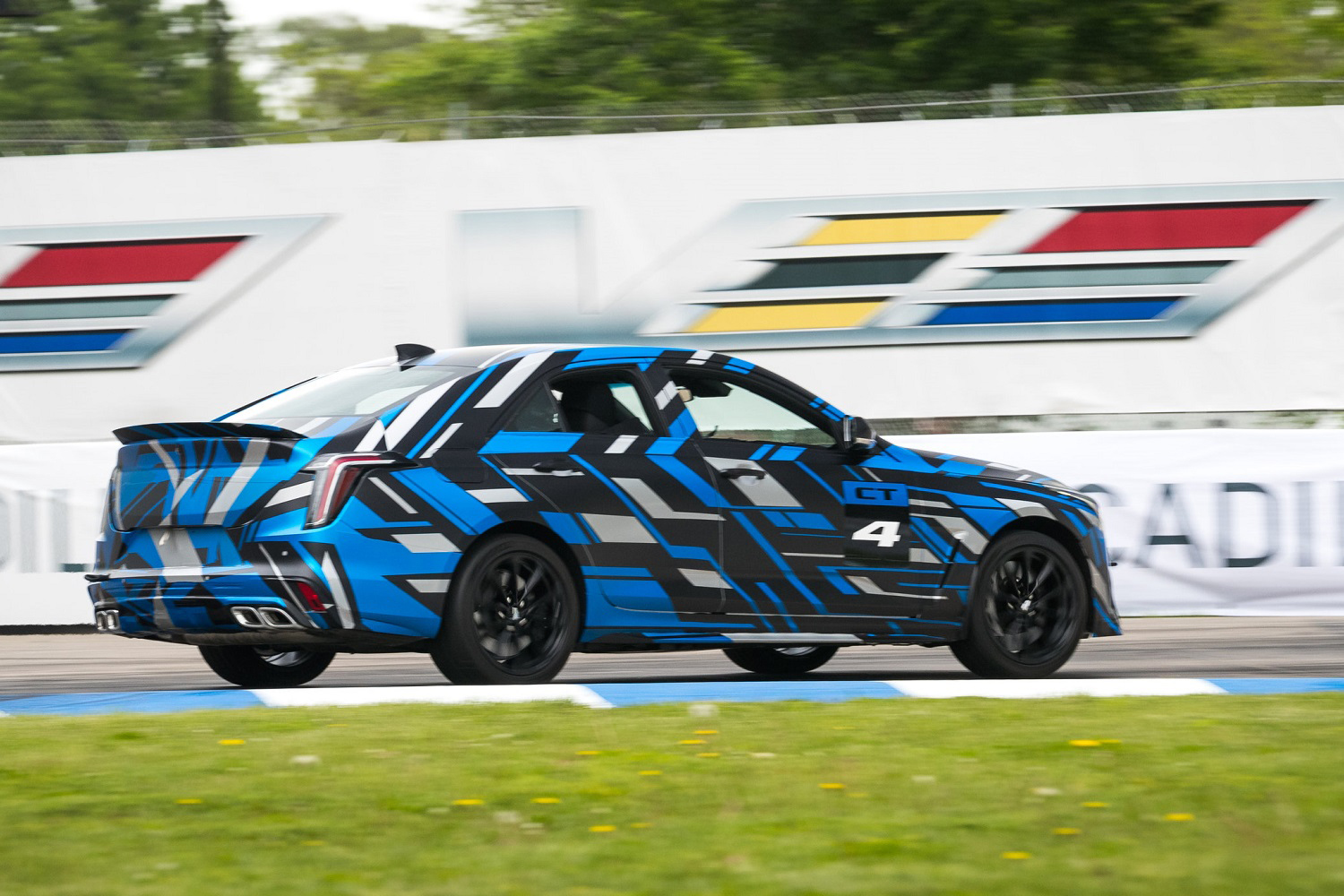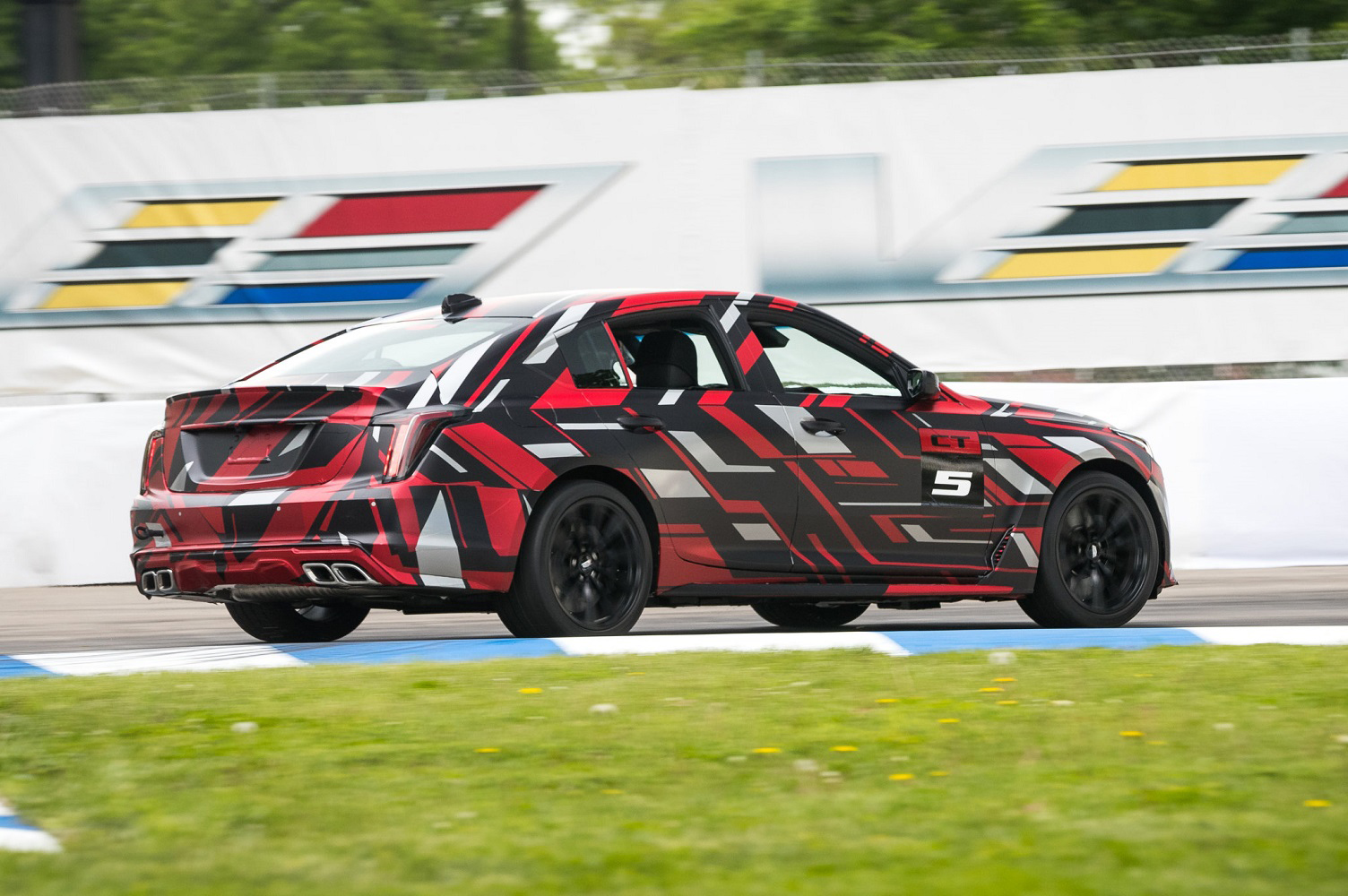Groans of disappointment resonated across America as Cadillac unveiled the CT4-V and the CT5-V. Both models are significantly less powerful than their predecessors. Cadillac hadn’t fired its final shot in the horsepower war, though, and it previewed its true flagship performance models during the Detroit Grand Prix.
We don’t know much about the cars yet. Even their name remains a mystery at this point. While the firm’s statement was fabulously light on details, the photos that accompanied it shed a little bit of insight into the transformation both cars have undergone. The images show preproduction prototypes camouflaged from top to bottom, but we can tell they gained a full body kit that directs more cooling air into the engine bay and creates the downforce needed to keep them firmly planted on the asphalt at high speeds. All told, the four-door muscle cars look relatively low-key; there are no gaping air vents or oversized wings.
Cadillac hasn’t released performance specifications, but those who saw — and heard — the prototypes in action said they sound like they pack a mean punch. Looking into our crystal ball, we wouldn’t be surprised if the CT4-based model comes with an evolution of the twin-turbocharged, 3.6-liter V6 that powered the fantastic ATS-V it replaces. The six made 464 horsepower and 445 pound-feet of torque; those figures will most likely go up in the new sedan.
The CT5-based model could receive the twin-turbocharged, 4.2-liter Blackwing V8 engine unveiled between the CT6-V‘s long, squared-off fenders. It delivers up to 550 hp in Cadillac’s biggest sedan, which isn’t asking much from a relatively big V8 with a pair of turbos strapped to it. We can’t imagine squeezing 100 extra horses out of the eight would be difficult, but, again, nothing is official yet. Similarly, transmission options are up in the air.
Cadillac will release additional information about the high-performance variants of the CT4 and the CT5 in the coming months, and both models will arrive in showrooms in time for the 2020 model year. Their work has already been cut out for them. The CT4-based model will compete in the same segment as the Alfa Romeo Giulia Quadrifoglio, Audi RS 5 Sportback, the BMW M3, and the Mercedes-AMG C63. The bigger, CT5-based sedan will be aimed at the upcoming Audi RS 7, the BMW M5, and the Mercedes-AMG E63.
